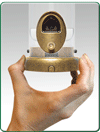This winter if you see a woodpecker that doesn’t quite look like any of the usual woodpeckers you regularly see you probably have a Yellow-bellied Sapsucker. A little smaller than a Red-bellied Woodpecker at about 8 ½” in length , the Sapsucker gets its name from its telltale habit of creating evenly spaced holes around a tree trunk or large shrub to release sap to feed on. The drilling does not kill the tree because the tree is not being girdled. Note: I have a Viburnum at my home that is 25 years old and riddled with Sapsucker holes. It leafs out and blooms every year.
The Sapsucker is a fairly common winter visitor across the state of TN found in residential yards as well as in woodlands. It is a handsome bird known for its red forecrown on a black and white head; the chin and throat are red on male, white on the female. The back is blackish with a varying pattern, with a white rump and large white wing patch. The underparts of the bird are yellowish, paler on a female. They clearly stand out among our usual woodpeckers.
Suet is a good choice to attract Sapsuckers, although I do see them going to fine sunflower hearts presented in a finch feeder. I use mainly peanut butter suet and see sapsuckers feed there all winter. Video Other things to try are fruit and nectar. Nectar can be offered in a standard hummingbird feeder and sapsuckers may find this a suitable supplement to tree sap. After all, many of you see Downy woodpeckers feeding on hummingbird feeders all summer long. Sapsuckers have the same long tongue that can wick nectar out of the feeder. Sapsuckers generally leave this area by mid-April and head back north to their breeding areas. Look for this bird and let us know if you see one.
Notable sightings in TN this past week include Pacific Loon at Percy Priest Lake and a
Black-chinned Hummingbird in McMinn County, TN. I spent a day at Centerhill Lake recently and saw at least a dozen Common Loons.
Winter tends to be our wet weather time of the year. Soaking rains can present a number of problems at feeders, especially feeders that contain shelled offerings like sunflower hearts, Premium Blend, shelled peanuts, and suet. Everyone who’s fed birds for any length of time has encountered the awful experience of cleaning out a feeder full of wet, ruined seed. It’s really messy and it stinks, and your investment in the more expensive seeds is lost. Try protecting your investment with one of the many weather guards, or hanging squirrel baffles, available for a variety of feeders. Hanging Squirrel Baffles are just larger versions of weather guards thus offering optimum weather protection.


